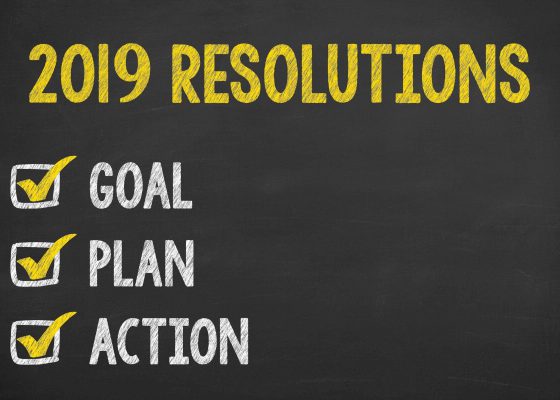How to keep your retail business relevant in a digital world
businessdoctorsadmin
22-09-17For many businesses in retail and the supply chain, the next three months can be a make or break period. Many of those selling from traditional bricks and mortar establishments have found it tough over the last few years, and the next three months will only be a short respite from the long term challenges with a tight squeeze coming from all sides. Problems retailers are currently facing are:
- Rising staff costs (minimum wage)
- Increases in business rates
- Currency depreciation (higher stock costs)
- Rising fuel prices (transport and logistics)
- Increase in pension costs (auto enrolment)
- Added pressure from the competition
- And the market trends in the retail sector
August’s ONS Retail Report was positive stating that, “retail sales were up 2.4% compared to last August and this has been the 52nd month in a row with an increase.” As always, however, the devil is in the detail: “Growth in the amount spent was a direct consequence of rising prices”, “Quantity of goods bought remains relatively flat, up 1% year on year.” If you bring the growing population into the equation, sales per capita are probably declining.
Digging even deeper into the data, we find that the key challenge is that customer buying habits are continually changing; “Growth is in non-essential purchases from non-food stores.” In layman’s terms, the UK population is making increasingly frequent visits to the discount food stores, but then spending any savings to buy non-essential items, such as clothes and treating themselves to home interior items. Sales of watches and jewellery were particularly strong in August too, boosting figures, but this was due to overseas tourists taking advantage of our £’s low currency exchange rate.
Bricks vs clicks
The biggest trend and ever increasing challenge for many retailers is non-retail store sales, i.e. the switch to online buying. Average weekly spend by UK customers online is now £1.1billion and has increased by 15.6% since last August. The ratio of all retail sales spent online is now 16.4%. Last December’s online sales were up a startling 21.3% on 2015. This should be sounding the alarm bells for bricks and mortar retailers.
How does my business adapt to these changes?
First and foremost, you need to have an online strategy. Online is where the growth potential and action is. But don’t shut the doors to your shop just yet, as it’s all about having a multi-pronged approach, the new buzzword in retail is Omni-Channel Marketing. You can start by integrating your online and offline marketing activities; using social media to attract and increase footfall to your store, combined with offering your product and wares through an e-commerce website that will open your products up to new markets in different areas of the country/continent/world.
Once you’ve attracted the customer into your shop, you need to enhance and add value to their customer experience to stay ahead of the competition. You need to capitalise on the fact that that customer has chosen to spend time in your premises, encourage them to buy from you and discourage them from spending their cash with your online competitors. Technology is the consumer’s friend; there are now apps available in which you can take a picture of an item and you’ll then be advised where you can buy it cheaper locally or online. By adding value to your customer’s experience in your store, you will discourage this sort of ‘shopping around’ behaviour that could be damaging to your business.
So, how do you add value? Well, consider, the décor, does it need a facelift? your branding, store layout and the ‘customer journey’ in store. Pay attention to where shoppers travel in your shop. What catches their attention? Are there any areas that fewer people visit? Why might that be? Can you place any low price/high profit items at queueing points for the customer to make impulse purchases while they wait? All pretty basic stuff but it’s about spending time trying and testing different layouts and displays and monitoring the success of each layout change. Think about the bigger chains; they have spent A LOT of time figuring out how best to capture a customer’s attention in store. We all nip in for one item and come out with a bag full!
Shopping in a bricks and mortar store has one unique feature you don’t have online: human beings who interact with each other. Digital engineers are doing their best to replicate this human interaction on line by utilising live chat bots and humanised search engines and so-called ‘personalisation’ strategies are only going to gain momentum over the coming years. So, ensure your staff in-store deliver high quality service levels to help the customers buy; surviving in a retail business is not about heavy discounting and the hard sell. It’s about offering a great shopping experience. Do you currently “meet and greet” and help them buy?.
New technology vs traditional values
Okay, so you’ve got the gist that I’m issuing a health warning to bricks and mortar retailers to embrace digital technologies? Good. Embracing digital, however, doesn’t mean that you have to forego your long-held traditional values of good value and friendly customer service. It simply means that to achieve success (and, indeed, survival), retailers need to use technology to make it easier for your customers to buy your products. You might consider self-service checkouts, online click and collect service, in-store click and buy/order touch screens, product video displays or interactive kiosks.
VR, AI, AR… eh?
So, you’ve embraced some simple digital technologies into your business and they’re proving to work. You’re a digital convert and you want to step your technology up a gear. What’s on the horizon…?
- Virtual Reality (VR): those weird headsets. Did you know that you can now specify your own Audi and test drive it without sitting in the car via VR? Audi hopes this will increase footfall to their showrooms just for this novel experience. The benefit to the dealers? They will carry less stock, so will need smaller retail outlets and attract a younger audience that now expects to use digital tech at every touchpoint. Keep an eye for VR car dealerships springing up on your local high street!
- Augmented Reality (AR): real world environments are augmented (overlaid) by computer generated sound, video and graphics. The most (in)famous example of AR is the recent Pokemon app, which saw teens wandering around town and countryside searching for characters that would appear on their phone screens against a real background filmed with the phone’s camera. (I’m informed by my daughter that we had a Pokemon hiding in our kitchen, which made our kitchen very popular with teenagers for a while.) Applying AR tech to retailing, Wayfair, the American furniture retailer, is piloting this technology using Google Tango software to show customers how their furniture might look in your home or office before buying.
- Artificial Intelligence (AI): intelligent machines. AI is being used in-store to enhance the shopping experience by introducing concepts such as the artificial store assistants used by Macy’s and Sears in the US. AI will be the real game changer and eventually, this technology will become so advanced that many stores in the future will not have checkouts and you’ll just walk in, pick up your chosen products and leave; no queuing and no cash transactions! Amazon are leading the digital march with their latest AI product, Alexa, and have already registered Amazon Go (“A new kind of store featuring the world’s most advanced shopping technology. No lines, no checkout – just grab and go!”) trade name in many markets and piloting the concept in Seattle. Amazon has also moved into the food retailing business with the recent purchase of Wholefoods, moving into the bricks and mortar retailing market and with plans to open 2,000 Amazon Go stores across the US in the next few years. Won’t be long before they are here in the UK?
In conclusion, as a retailer, you should regularly review your operation from the customers’ perspective and ask yourself, “”What could we do to enhance the customers buying experience?” Don’t view digital technology as a stand-alone hurdle, but utilise it to your customers’ advantage to provide them with what they want. Remember that many of your current customers and future customers will have been born between the 1980s and 2000s (known as Millennials) and have been brought up surrounded with computers and technology (digital ‘natives’), so you’ll need embrace it or risk being left behind!
“By changing nothing, nothing changes.” – Tony Robbins
Want to learn more?
Come and have a chat with me at…
Breaking Big workshop, 3pm, Thursday 28 September at Growth17 Business to Business Exhibition and Networking event, at Carlisle Racecourse.
Are you ready to take your business to the next level?
• Frustrated that your businesses growth has plateaued?
• Anxious that you spend no time working on your business?
• Concerned that you are the only person that makes things happen?
If YES…
… Join Peter for an hour’s interactive talk. Whereby you will find out the key steps to kick start your business and take it to the next level through the 10 steps to grow your business profitably.
Uncategorized

Uncategorized
November 19, 2019Business Confidence – up or down?
The Institute of Chartered Accountants in England & Wales (ICAEW) publish a quarterly UK Business Confidence Monitor and Q4 2019...

Uncategorized
March 27, 2019Have you Found your Core Purpose?
Find Your Purpose Your Core Purpose should come from a mix of what you love, what you are good at,...

Uncategorized
December 11, 2018Three Business Resolutions for the New Year
Three resolutions that you can make to improve your business in the New Year by Planning, Formalising, and Reviewing all...




